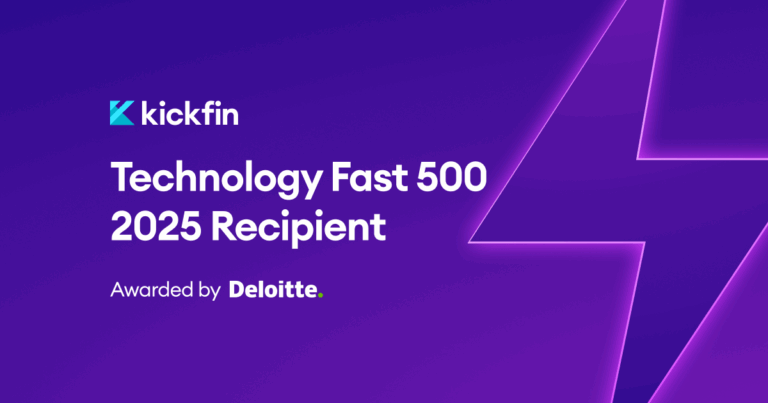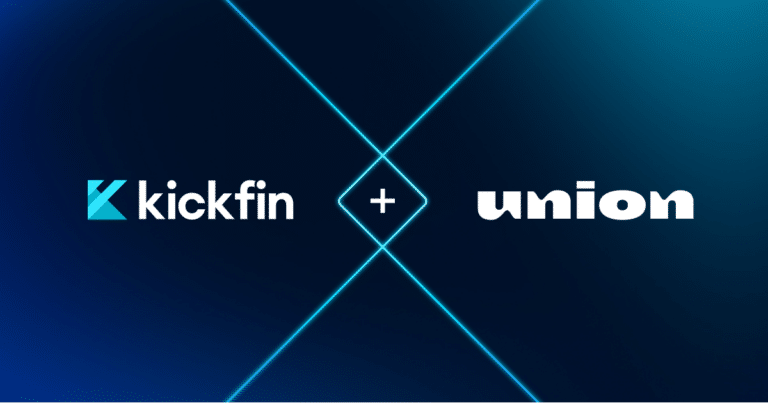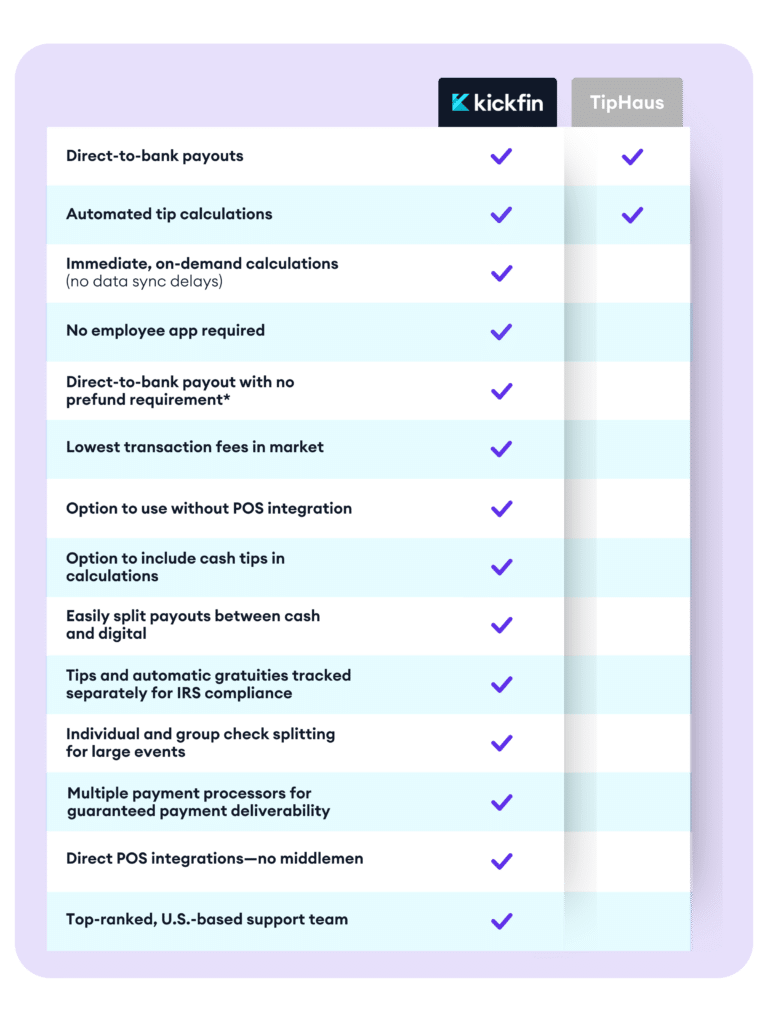Paying tips through payroll can be a simple way for employers to distribute tips they collect on employees’ behalf. It eases the burden on both employers and employees by ensuring tips are appropriately taxed and recorded. However, it’s also much more involved than paying tips instantly, as we’ll explain below.
What Is a Tipped Employee?
A tipped employee is any employee who regularly and customarily receives at least $30 in monthly tips from customers. These employees often work in industries where gratuities are common, including restaurants, bars, hotels, and other hospitality or service businesses. Many tips employees interact directly with customers who provide tips as a reward for good service.
In many cases, tipped employees receive lower base hourly wages than non-tipped employees, expecting their tips to supplement their income to at least meet the federal minimum wage. This lower direct wage and the tips received constitute the employee’s total earnings.
How Do Employee Tips Work?
Employee tips function as a direct, voluntary payment to service workers by customers in appreciation for the service they receive. Customers typically determine the tip amount based on the service quality, and it is often a percentage of the total bill. In many industries, customers usually tip 10% to 20% of their total bill to reward employees for good service.
The process of handling tips varies by industry and by business. In some cases – including cash businesses – employees often keep their tips individually. In other cases, tips are pooled and then divided among the staff, including servers, bartenders, and back-of-the-house workers.
Most often, when employees receive cash tips, they’re entitled to keep those tips (minus any portion they’ve agreed before to share with support staff). Additionally, employers are responsible for distributing tips they collect on behalf of employees, including through credit or debit card transactions.
What Is a Tip Credit?
A tip credit is a provision in the Fair Labor Standards Act (FLSA) that allows employers to count a portion of their tipped employees’ gratuities as a component of their total wages. This means that in states where tip credits are allowed employers can pay tipped employees a lower direct wage if the amount of tips received is sufficient to bring the employee’s total earnings to at least the federal minimum wage.
Paying Tips Instantly vs Through Payroll
In most businesses, employees receive their tips instantly in cash at the end of their shift. This immediate form of payment gives employees instant access to their earnings. Still, it can also lead to management headaches and potential inaccuracies in record-keeping. Handling large amounts of cash can pose risks to a business, and reconciling tips reported by employees with sales data can be a time-consuming task.
Paying tips through payroll involves collecting the tips earned by employees and adding them to their regular paychecks. While this method ensures accurate tracking and reporting of tip income, it will delay employees’ access to their earnings. Over time, employees can also grow skeptical that tip calculations are accurate.
This is where Kickfin comes into play. Kickfin is a platform that solves these challenges by enabling instant tip payments directly to employees’ bank accounts. This eliminates the risks and hassles associated with handling cash and ensures accurate, real-time tracking and reporting of tips. Employees benefit from immediate access to their earnings, improving financial security and job satisfaction.
How To Pay Tips Through Payroll
Collecting and tracking tips throughout a pay period can be a headache, but it also ensures accurate reporting and tracking of tip income for employees. In this section, we will walk through the basic steps of how to pay tips through payroll.
1. Collect Non-Cash Tips on Behalf of Employees
Non-cash tips, such as credit and debit card tips, are typically included in the customer’s bill at the point of sale (POS). To collect these tips, businesses must integrate a tipping option into their POS system. That way, when a customer pays with a card, they can add a tip to their total bill amount. Most modern POS systems offer an option to add a tip to the bill.
Collect the total amount of non-cash tips from the POS system at the end of each shift or business day. This should be a simple matter of running a report or checking each employee’s accumulated tips in your POS system. Add the collected tips to each employee’s payroll for that period. In some cases, you might be able to integrate your POS system with your payroll system to automate this step.
2. Transfer Funds from Merchant Account to Payroll Account
Once customer transactions for a given shift settle and funds are deposited into your merchant account, transfer money from your merchant account to your payroll account to ensure you have the funds necessary to cover employee payroll.
Keep in mind that transfers may not be instantaneous, depending on your bank’s policies and procedures. Therefore, scheduling these transfers well before your payroll processing days is recommended to ensure the funds are available when needed.
3. Separate Tips by Employee
Once you have money in your payroll account, process payroll as you would normally – by multiplying each employee’s hourly wage by the number of hours they worked in that pay period. Then, add the calculated tips to the corresponding employee’s payroll. If you process payroll manually, this could mean adding the tip amount to the employee’s regular wage for that pay period. If you’re using a digital payroll system, there may be a specific field or feature where you can input the tip amount.
At this point, you should ensure that each employee’s pay meets state and federal minimum wage requirements. If one or more employees’ total compensation (wages plus tips) does not meet minimum wage, you’ll need to supplement their wages for that pay period to compensate for any shortfall. (Note: This would only apply in states that allow restaurant operators to take a tip credit.)
4. Incorporate Tips into Scheduled Payroll
Once you add each employee’s tips to their pay amount for a given pay period, you’ll need to calculate taxes and other deductions based on their total income. Typically, both federal and state income taxes, along with the employee’s share of social security and Medicare taxes (FICA), are calculated and withheld from this total income. Any other deductions or withholdings that the employee has authorized should also be deducted.
Remember to clearly itemize each of these deductions on the employee’s payslip, showing the specific amounts deducted for each category. This helps employees understand how their total income, including tips, is calculated and where their money is going.
5. Pay Out Tips as Part of Payroll
After calculating each employee’s income (including tips) and deductions, process payroll – paying out net wages and providing employees with copies of their paystubs for that pay period. Most payroll systems generate these statements automatically. Otherwise, you’ll need to generate itemized pay stubs manually.
What Is the Difference Between Cash Tips and Paycheck Tips?
Cash tips and paycheck tips represent two different methods of tipping in the hospitality industry. Cash tips are the traditional and most common form of tipping. They are given directly to the service provider, often immediately after service has been rendered. This method allows service staff to receive gratuity instantly, providing immediate access to their earnings.
Paycheck tips, on the other hand, are tips that are added to an employee’s regular paycheck. This method involves collecting non-cash tips (credit and debit card tips) through a POS system and adding them to payroll for distribution. Paycheck tips provide more accurate tracking of tip income for tax purposes but also delay employees’ access to their earnings.
Do Employees Have to Pool Tips?
Pooling tips, also known as “tip pooling” or “tip sharing,” is a common practice in the hospitality industry. It involves combining all or a portion of employees’ tips into a shared pool, which is then divided among a group of employees. The aim of tip pooling is to promote a collaborative work environment where all staff members share in the business’s success.
In the U.S., an employer can require employees to participate in a tip pool or share tips with other employees. However, this is only allowed among employees who customarily and regularly receive tips, such as servers and bartenders. Back-of-house staff, such as cooks and dishwashers, can’t be forced to participate in a tip pool unless the employer pays the full minimum wage and doesn’t take a tip credit.
If you’re thinking about having employees pool tips, first familiarize yourself with local laws to ensure your tip pooling policies are compliant. You need to create a written tip-pooling policy, make employees aware of this policy from the outset, and effectively communicate any changes.






